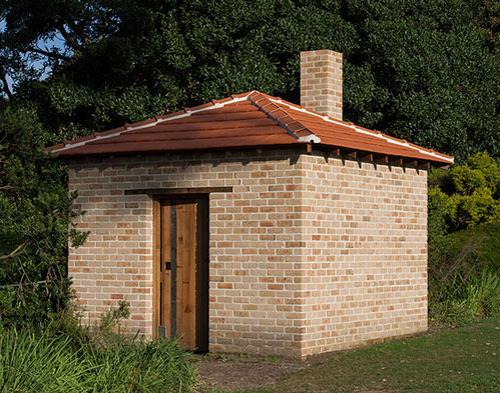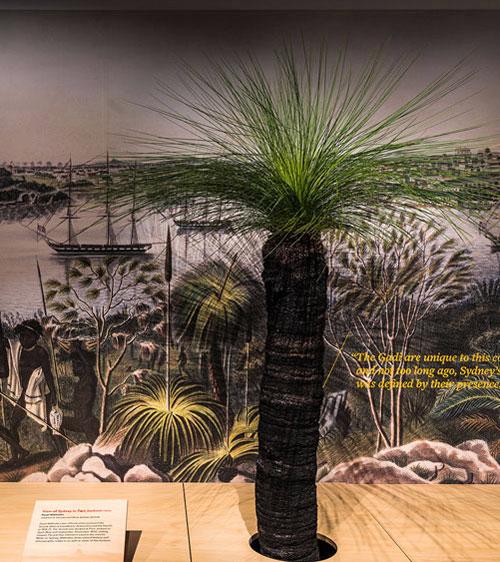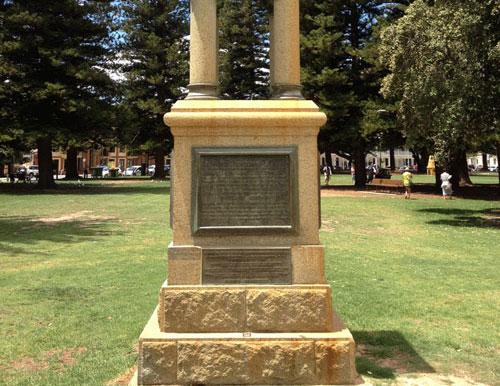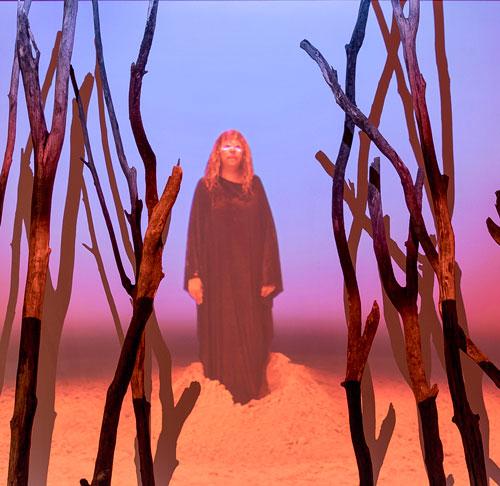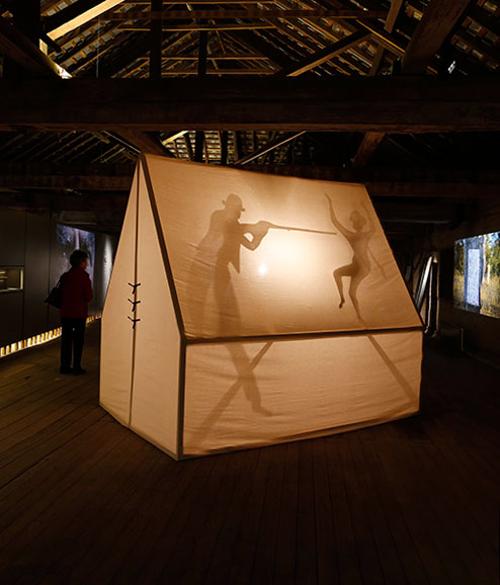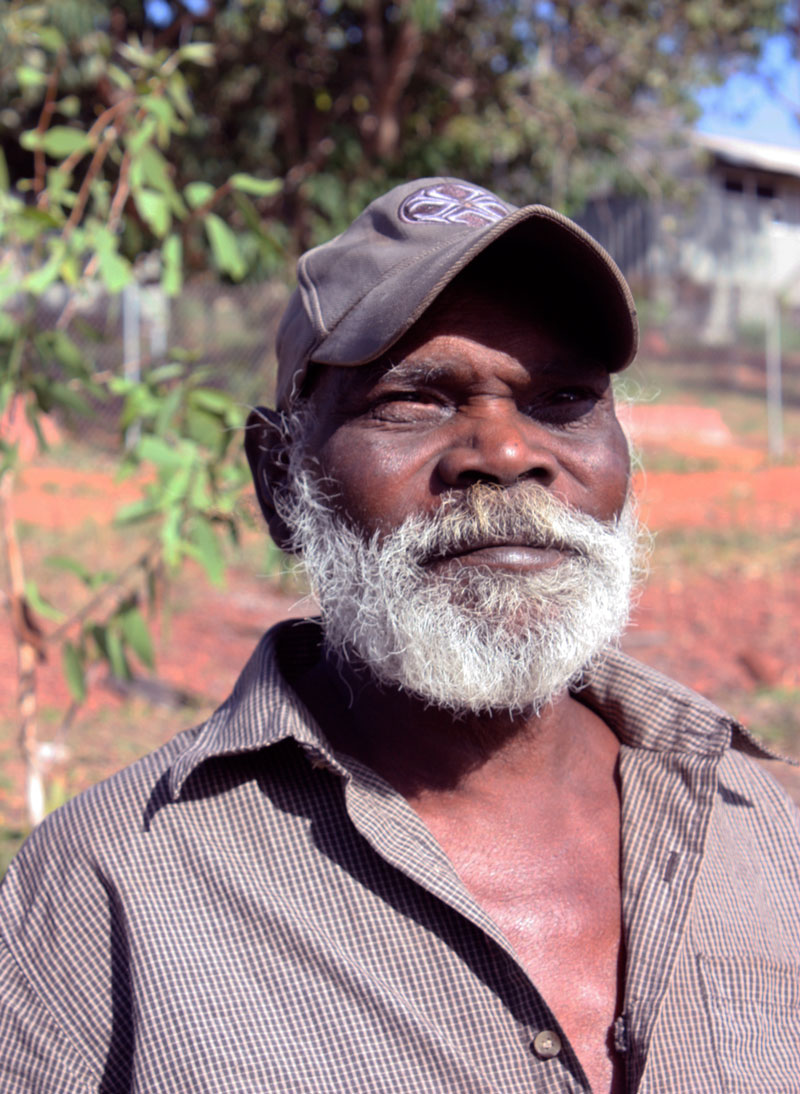
Nawurapu Wunuŋmurra was the eldest son of 1997 Telstra National Aboriginal and Islander Art Award overall First Prize winner, the late Yaŋgarriny Wunuŋmurra. Yaŋgarriny was one of the artists of the legendary Yirrkala Church Panels. He had been trained in the school of this old man (who was the first Aboriginal artist to have his copyright recognised in an Australian court) from an early age at first assisting his father and then, as his own spiritual authority increased, in his own right. The critic Giles Auty twice praised his entries to the Telstra National Aboriginal and Islander Art Award in years 1995 and 1997 but Nawurapu did not win any award.
A painting that he made in 1995, now in the collection of the Queensland Art Gallery | Gallery of Modern Art caused controversy within the leadership of Yolŋu law. A major work which included no figurative imagery broke the convention of painting for outside audiences and aroused the ire of a more conservative theocracy. After an impasse, during which the painting was hidden, the veto on such painting was renewed but a watershed moment had been reached. Djambawa Marawili was able to negotiate the Buwayak (Invisibility) movement through the Saltwater Collection in 1997.
Nawurapu’s 2006 entry to this competition was purchased by the Museum and Art Gallery of the Northern Territory who hold the annual awards. His father was one of the senior Yirritja moiety elders. Since his passing, Nawurapu stepped into this senior role with his brothers. With his ceremonial responsibilities he was required to move between the homeland centres of the Miwatj region, North East Arnhem land and even beyond into Central Arnhem land. He lived at Yirrkala, Gurrumurru, Gangan, Gapuwiak and Wandawuy in recent years.
.jpg)
After involvement in all the major group projects stemming from Yirrkala in the 1990s Nawurapu's first solo show was at Sydney’s Grant Pirrie Gallery in 2004. His sculptural work made a big impact at Bitpit exhibition at Raft artspace, Darwin, in 2008. A set of his mokuy were purchased by the Queensland Art Gallery. He was included in the major contemporary survey show Optimism at the Gallery of Modern Art in 2008 and exhibited at the third Moscow Biennale in 2009.
In 2010 Nawurapu won the inaugural Telstra New Media prize with a set of film illuminated mokuy carvings at the 27th National Aboriginal and Torres Strait Islander Art Awards. His bronzes are now installed in the heart of Darwin’s Waterfront by the Northern Territory Government. In early 2013 he suffered the amputation of his right foot below the knee as the result of an injury. But this did not diminish his strength or vigour. Through the course of that year he accomplished a full rehabilitation and continued to harvest timber in remote areas and work it. His proud spirit remained undimmed and undiminished. Testament to that was the powerful show he presented at Gallery Gabrielle Pizzi in March 2014.
Nawurapu travelled to Makassar in 2015 and a batik from one of his paintings was presented to the Textile Museum in Jakarta. Thirty-six of his sculptures were acquired by the Australian National Maritime Museum in Sydney.[1] They also featured in the Tarnanthi exhibition curated by Nici Cumpston for the Art Gallery of South Australia in late 2017. Firm, proud, intelligent but always humble, peaceful and shy, Nawurapu Wunuŋmurra’s handshake always identified him as a fulltime sculptor. He died at Gove District Hospital on 14 March 2018.
Nawurapu Wunuŋmurra: Mokuy is on exhibition at Hugo Michell Gallery, Adelaide, 22 March – 28 April 2018.
This exhibit blows away Dior, Bowie, Mapplethorpe – ALL of it.
And it's ours from the Yolŋu people – their Dreamtime on bark paintings. I'm in total awe.
Wendy Harmer, ABC Radio
Footnotes
- ^ Online essay and collection focus by Helen Anu at http://stories.anmm.gov.au/spirit_figures/.

